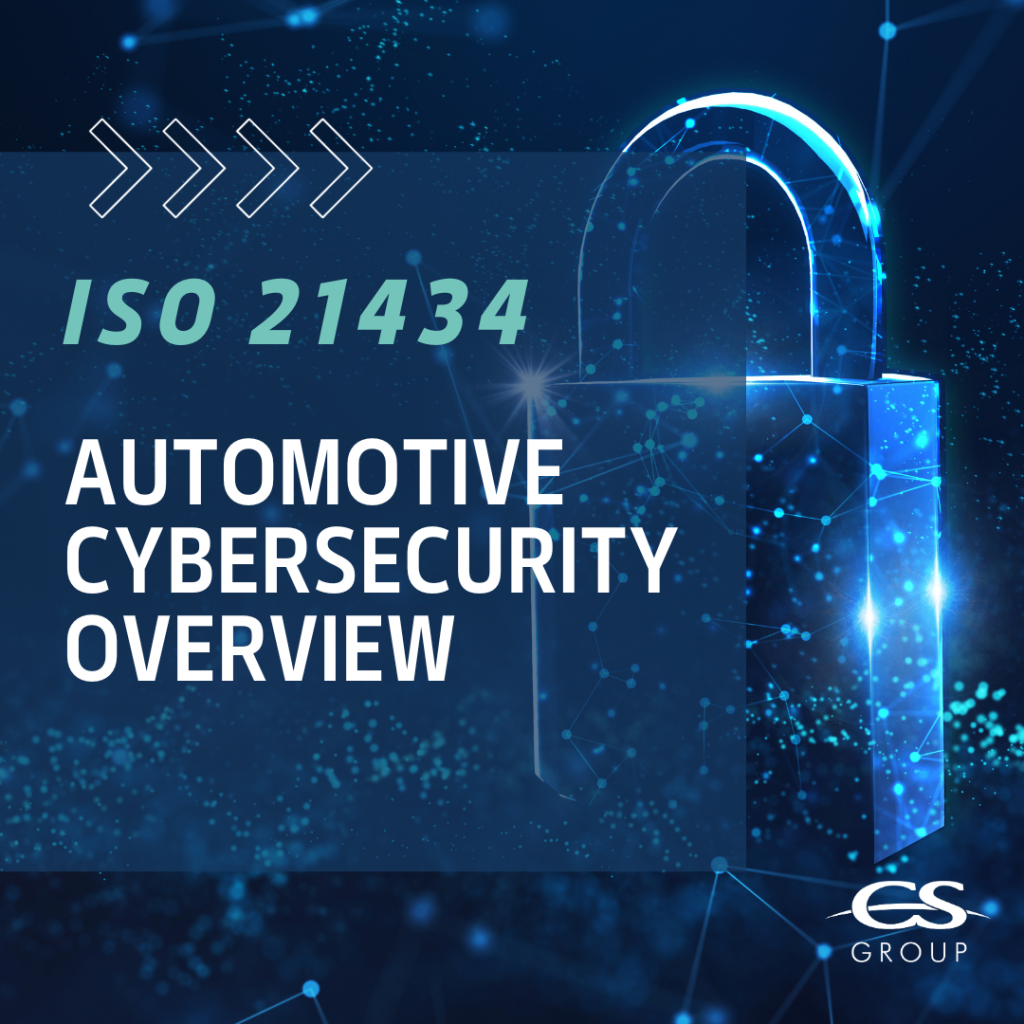Automotive Cybersecurity

In the dynamic realm of modern road vehicles, safeguarding against cyber threats is paramount. Automotive Cybersecurity standards as the ISO/SAE 21434 serves as a cornerstone, offering comprehensive guidelines for crafting cyber-resilient electronic systems. This international standard ensures vehicles are constructed to minimize risks, fortifying cybersecurity posture and adhering to global regulations like UNECE R155 and R156.
Automotive Cybersecurity & ISO/SAE 21434
ISO 21434, a guiding force for the automotive industry, defines the path to cyber-resilient electronic systems in modern vehicles. Dive into this standard to mitigate risks and ensure vehicles are crafted to withstand evolving cyber threats, reducing the potential for accidents and ensuring the safety of occupants.
Navigating the Challenges: UNECE’s Response: The surge in vehicle connectivity mandates stringent rules. Explore the impact of UNECE WP. 29 forums’ binding regulation (UN-R155/156), compelling Original Equipment Manufacturers (OEMs) and third parties to fortify the automotive cybersecurity posture of road vehicles. Uncover the transformative journey in response to the rising challenges.
ISO/SAE 21434 Certification Benefits: Certifying your product to ISO 21434 standards ensures alignment with UNECE R155/156 regulations. Elevate your product’s cybersecurity, offering a guarantee for privileged access to the global automotive market. Explore the tangible benefits that certification brings to the reliability of your critical systems with CS Group Canada & USA.
CyberSecurity Management System (CSMS) - UN R155
CSMS Certification
The CSMS comprises processes, policies, and technologies managing overall cybersecurity risk, supporting road vehicles’ cybersecurity engineering throughout the product lifecycle.
The organization’s cybersecurity management must cover the following items:
- Cybersecurity governance: Policies and procedures
- Cybersecurity Culture: Training and awareness and continuous improvement
- Information sharing
- Tool Management
- System management
- Information Security Management
CSMS Benefits in Cybersecurity Risk Detection: Implementing a robust CSMS equips organizations to manage cybersecurity risks across all product lifecycle phases. From concept development to operation and maintenance, CSMS facilitates identification, detection, protection, and recovery from cyber threats, ensuring a resilient automotive cybersecurity posture.
Threat Analysis and Risk Assessment (TARA) - ISO/SAE 21434
TARA Approach
The TARA is the systematic approach to identify cybersecurity threats and evaluate the risk based on the feasibility of the threats and its possible adverse impacts.
This risk-based approach is an enabler to mitigate the risk of product and systems for the vehicle and determine the appropriate measures, consolidated in the cybersecurity architecture.
TARA’s Benefits: Conducting a TARA is a necessary step in developing and designing cyber-resilient electronic systems. It helps organizations identify and address potential vulnerabilities and risks to their automotive embedded systems.
Vehicle Security Operation Center (VSoC)
Automotive Cybersecurity V/SOC
V/SOC is a centralized location where the security team monitors and manages the products cybersecurity until the end of support. Additionally, it’s responsible for monitoring cybersecurity incidents, analyzing the new disclose vulnerabilities and assessing their risk to maintain the effectiveness of cybersecurity measure.
V/SOC’s Benefits: The main goal of the V/SOC is to ensure that the automotive cybersecurity is maintained against the ever-evolving cyber-threats landscape during product operation. By implementing the requirements of the ISO 21434 standard, the V/SOC will help you maintain the security and integrity of vehicles throughout its operations.
Software Update Management System (SUMS) - UN R156
A robust system through the time
SUMS/R156 updates on critical embedded software are necessary to constantly improve vehicle autonomous systems depending on environmental changes.
To make sure those SW improvements don’t impact the reliability of the cybersecurity system of the vehicle, the UNECE has created the R-156 binding rule to frame updates through the Software Update Management System methodology.
Components of SUMS/R156: On-board Diagnostics (OBD) systems, incident management, and a systematic approach to cybersecurity risk management. Uncover how these components contribute to the comprehensive framework for managing automotive cybersecurity risks throughout a vehicle’s lifecycle.
SUMS/R156’s Benefits: Implementing SUMS/R156 ensures the constant safety and security of critical embedded systems. Discover how adherence to ISO 24089 standards provides an effective framework for compliance with UNECE R156, enhancing product quality, competitiveness, and longevity in the automotive industry.
